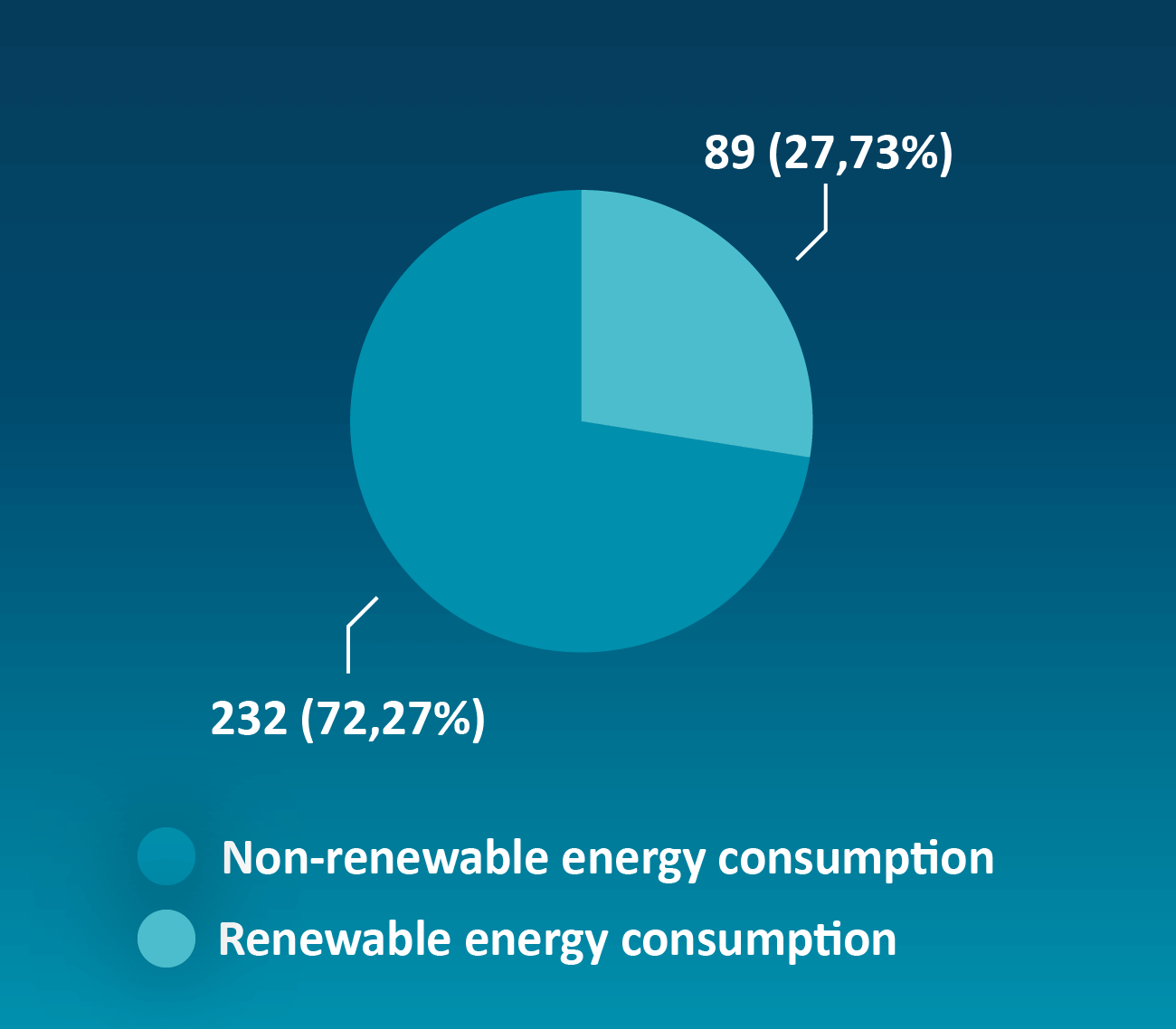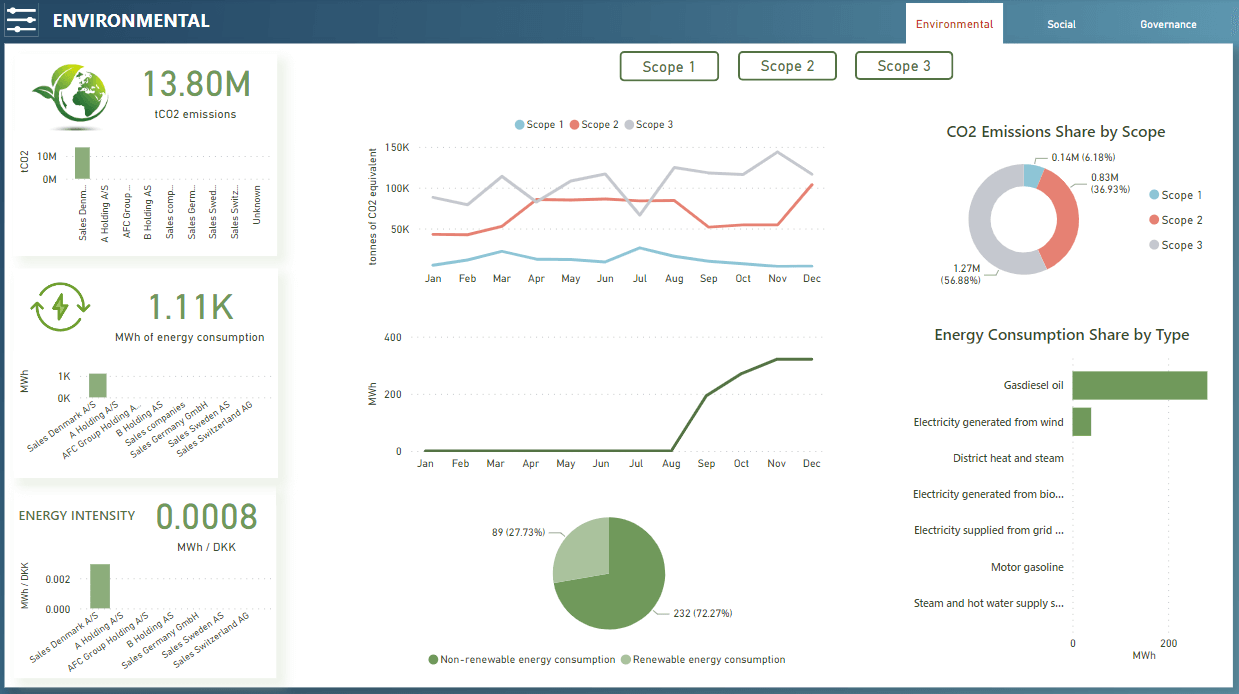Calculating Energy Consumption and Energy Intensity

Two complex KPIs
Energy Consumption and Energy Intensity are one of the mandatory Key Performance Indicators (KPIs), which is defined by the EU Sustainability Reporting Standards.
This article sheds light on the fundamental principles of the KPIs, explores the challenges organizations face in calculating it accurately, and highlights how our innovative product provides a streamlined solution for measuring and managing this critical metrics.

Fundamental principles
The Energy Consumption and Energy Intensity KPIs serve as fundamental measures of an organization’s energy usage and efficiency. They provide valuable insights into the environmental impact of operations and help identify areas for improvement.
Energy Consumption
Basically, organizations are required to calculate its energy usage in MWh – one common unit of measurement. Energy usage is defined as scope 1 and 2 activities, meaning that any organization should convert its fuel, electricity, heating and cooling consumption into MWh by using calorific values relevant to the type of energy, e.g. diesel oil.
Moreover, the energy consumption in MWh will need to be divided into non-renewable energy consumption and renewable energy consumption, including sub categories.
Energy Intensity
To calculate the Energy Intensity KPI, organizations must divide the total Energy Consumption from activities in high climate impact sectors (MWh) by the Net Revenue from related activities (monetary unit such as EUR).
Exploring the challenges
Converting energy usage from various input activities and units to a standardized measurement, such as megawatt-hours (MWh), poses significant challenges. One of the complexities lies in converting non-energy metrics, such as monetary values and kilometers into MWh.
Monetary Values: Translating monetary expenditures into energy consumption requires considering energy prices, which can fluctuate over time. This challenge involves converting currency units to energy units, factoring in regional energy prices, and accounting for inflation or price variations.
Kilometers: Converting distance traveled, such as kilometers driven by vehicles, into energy consumption requires accounting for different vehicle types and fuel efficiency per fuel type.
In both cases, organizations must convert either monetary values or kilometers into:
- liters or tons of different fuel types (scope 1)
- KWh/MWh (scope 2)
And further convert liters, tons and KWh into MWh using calorific values, which serves as conversion factors.
These challenges highlight the complexity of converting diverse input activities and units into a standardized energy measurement like MWh. Accurate conversions require detailed knowledge of energy conversion factors, up-to-date energy prices, and specific fuel characteristics.
How Solitwork deals with the KPIs
Solitwork’s innovative AFC ESG & Carbon Accounting product provides a streamlined solution for measuring and managing those critical metrics.
As part of the Carbon Accounting rules setting for scope 1 and 2 activities, our customers are able to:
- Link input activities and units to any calorific value already available in the product
or - Add any custom conversion factor themselves including supplementary documents
Our customers will then be provided with a system generated and anchored calculation of Energy Consumption. Furthermore, any calculation details such as conversion factors are stored and available to ensure a clear audit trail.
Energy Intensity is automatically calculated from the revenue input to the product which in most cases are caught automatically from integrations to the ERP system of our customers.



